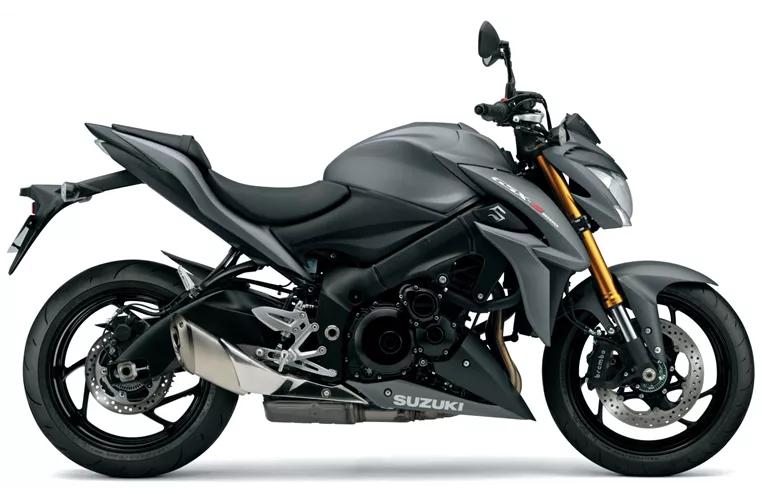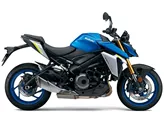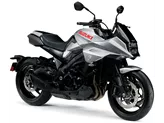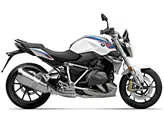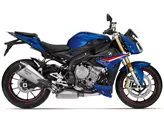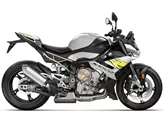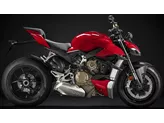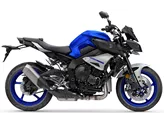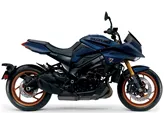BMW S 1000 R 2016 vs. Suzuki GSX-S1000 2016

BMW S 1000 R 2016

Suzuki GSX-S1000 2016
Vue d’ensemble - BMW S 1000 R 2016 vs Suzuki GSX-S1000 2016
The BMW S 1000 R 2016 and the Suzuki GSX-S1000 2016 are both naked bikes with similar engine types, displacements, and suspension systems. However, there are some notable differences between the two models.
In terms of engine power, the BMW S 1000 R 2016 has a slight advantage with 160 HP compared to the Suzuki GSX-S1000 2016's 149 HP. The BMW also has a higher torque of 112 Nm compared to the Suzuki's 106 Nm. This means that the BMW may offer slightly better acceleration and top speed.
Both bikes have four cylinders and a displacement of 999ccm, providing a good balance between power and fuel efficiency.
In terms of suspension, both bikes feature upside-down telescopic forks in the front and a swing arm with a monoshock in the rear. This ensures a smooth and comfortable ride for both models.

BMW S 1000 R 2016
The chassis of both bikes is made of aluminum and features a twin tube design, providing strength and stability. This allows for precise handling and control.
Both bikes have double disk brakes in the front with four pistons and radial technology, ensuring powerful and reliable braking performance.
In terms of dimensions and weights, there are some minor differences between the two models. The BMW S 1000 R 2016 has a slightly shorter wheelbase of 1439mm compared to the Suzuki GSX-S1000 2016's 1460mm. The seat height is also slightly different, with the BMW at 814mm and the Suzuki at 815mm. The kerb weight with ABS is slightly higher for the Suzuki at 209kg compared to the BMW's 207kg. Both bikes have a fuel tank capacity of around 17 liters.
Moving on to the strengths of each model, the BMW S 1000 R 2016 is praised for its powerful and well-controllable engine, as well as its powerful braking system. Additionally, it offers a comfortable seating position for the rider.

Suzuki GSX-S1000 2016
On the other hand, the Suzuki GSX-S1000 2016 is also praised for its powerful engine and good braking control. It is also noted for its stable and sensitive chassis, providing excellent handling and control. Furthermore, the Suzuki is relatively more affordable compared to the BMW.
However, there are also some weaknesses to consider. The BMW S 1000 R 2016 is criticized for its expensive optional extras, which may make it less accessible for some riders. Additionally, the bike has a hard chassis, which may result in a slightly less comfortable ride.
On the other hand, the Suzuki GSX-S1000 2016 is noted for its front end, which some riders feel looks too good and may not match the overall design of the bike. It is also mentioned that the throttle response in the lower rev range can be overly sensitive, which may require some adjustment in riding style.
In conclusion, both the BMW S 1000 R 2016 and the Suzuki GSX-S1000 2016 are powerful and capable naked bikes with their own strengths and weaknesses. The BMW offers a powerful engine and braking system, while the Suzuki provides a stable chassis and a relatively lower price. Ultimately, the choice between the two models will depend on the rider's preferences and priorities.
Caractéristiques techniques BMW S 1000 R 2016 par rapport à Suzuki GSX-S1000 2016
Avantages et inconvénients en comparaison
Avantages et inconvénients en comparaison
BMW S 1000 R 2016

Sur la BMW S 1000 R, on remarque à la fois la parenté étroite avec la Superbike S 1000 RR et la volonté de doter la machine d'un niveau de confort élevé pour la route et le quotidien. Le moteur quatre cylindres de 1000 cm3 se met donc au travail de manière brutale, tout en restant bien contrôlable, et la position de conduite est par conséquent confortable et sportive. Le fait que la S 1000 R soit l'une des power naked bikes les plus abordables est surprenant et réjouissant, mais il ne faut pas pour autant mettre la main sur la liste des équipements spéciaux - car grâce aux nombreuses caractéristiques irrésistibles, elle sera certainement plus chère.
Suzuki GSX-S1000 2016
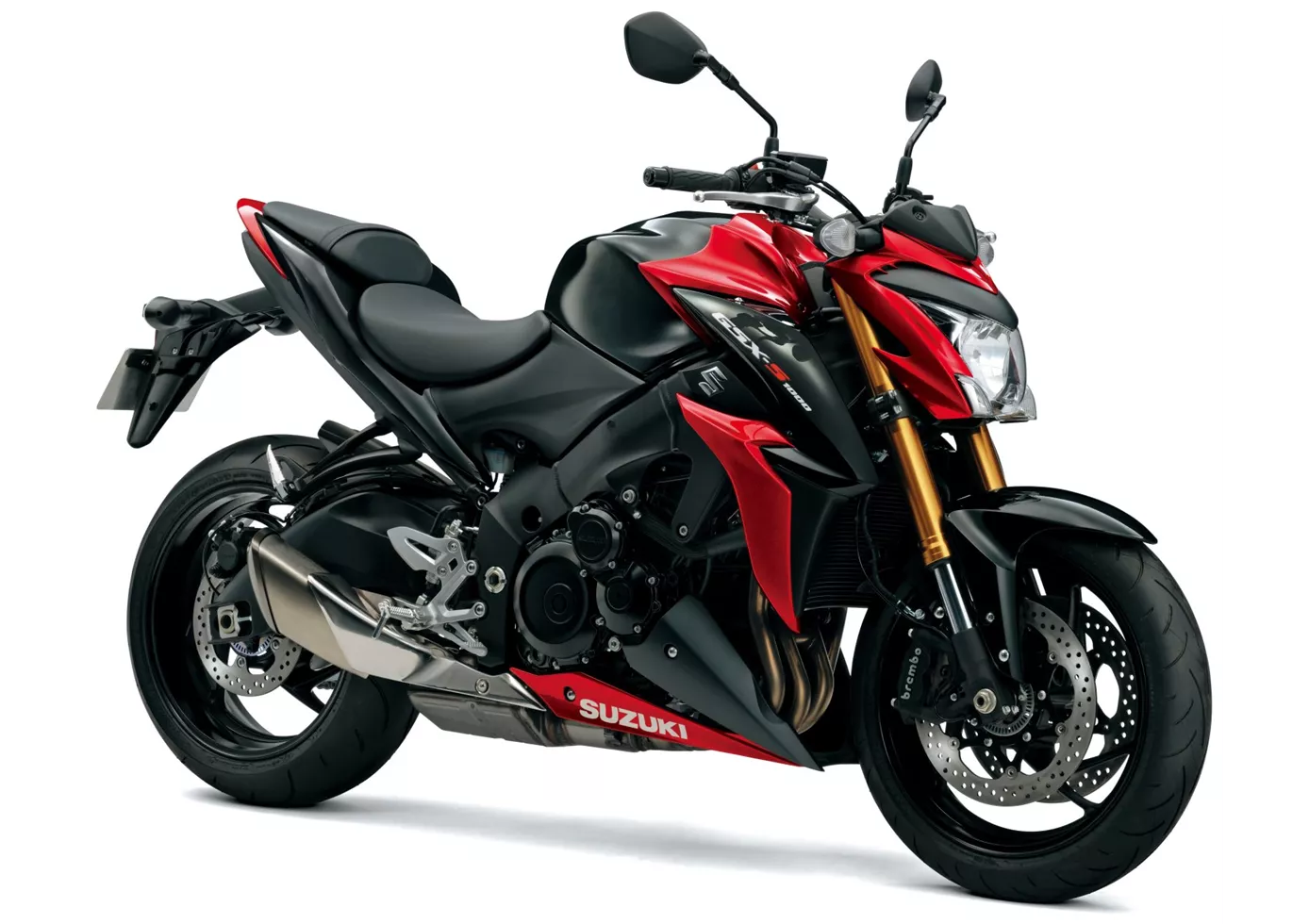
Certains pourraient s'étonner qu'après avoir attendu si longtemps, Suzuki n'ait pas lancé sur le marché la power naked bike ultime et sans compromis. Au lieu de cela, la Suzuki GSX-S 1000 semble presque trop sage avec ses 149 CV. Mais si on la conduit sur une piste de course, on se rend vite compte que le moteur est bien plus puissant dans la vie réelle et que le reste des performances du châssis et du système de freinage sont également remarquables. En outre, elle offre une bonne dose d'aptitude à l'usage quotidien et pratique - ce qui n'est pas un mauvais ingrédient lorsqu'on doit tout couvrir avec une seule moto, du quotidien à la piste de course.
Comparaison des prix Prix moyen du marché BMW S 1000 R vs Suzuki GSX-S1000
There are a few key differences between a BMW S 1000 R 2016 and a Suzuki GSX-S1000 2016. In terms of price, the actual average price of a BMW S 1000 R 2016 is about 32% higher. A BMW S 1000 R 2016 experiences a loss of 380 USD in one year and 1,940 USD in two years of ownership. This is offset by a loss of 90 USD and 1,330 USD for a Suzuki GSX-S1000 2016. There are the same number of bikes of both models available on the 1000PS.de marketplace, specifically 10. It takes less time to sell a BMW S 1000 R with 69 days compared to 109 days for a Suzuki GSX-S1000. Since model year 2014 1000PS.de editors have written 62 reviews for the BMW S 1000 R and 36 reviews for the Suzuki GSX-S1000 since model year 2015. The first review for the BMW S 1000 R was published on 11/3/2013 and now has more than 17,300 views. This compares to more than 17,100 views for the first review on Suzuki GSX-S1000 published on 9/27/2014.

